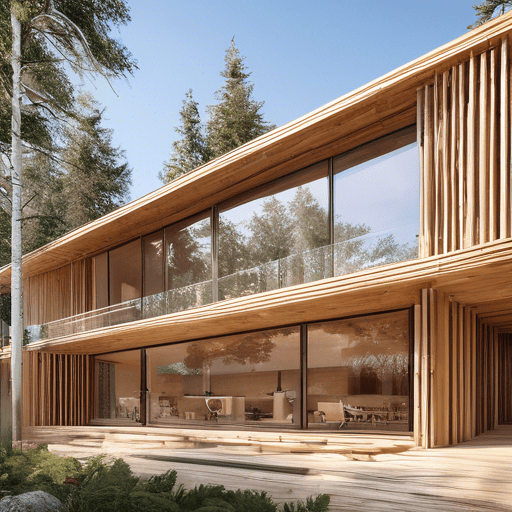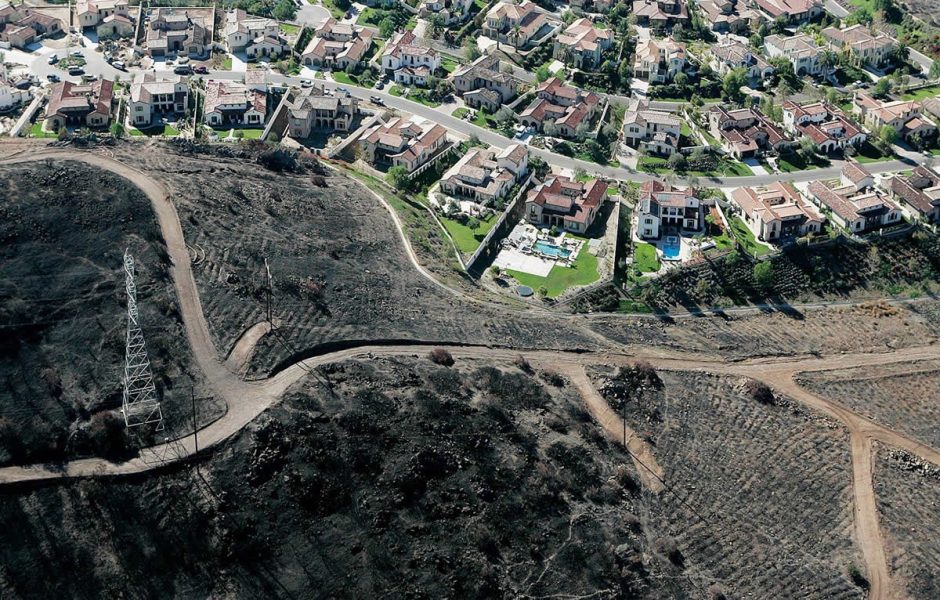In an era marked by sustainability, innovation, and environmental consciousness, timber construction and, more prominently, Mass Timber Construction, have emerged
The whole restaurant industry has transformed due to the novel COVID-19 pandemic that influences the worldwide economy, customer inclinations, customer’s fondness, and the marketplace in general. One of the many things that should transform because of COVID-19 is restaurant design and layout. Many Restaurateurs, engineers, and chefs are struggling hard to redesign and modify the restaurant layout to achieve more sustainable and effective outcomes. On the other hand, many restaurants are following the strategy of takeaway or drive-thru model for the safety of their customers, while many restaurants are unfortunately closed. The primary objective of the Restaurant architecture is to make diners sustainable and comfortable with the environment. However, in the age of coronavirus, the comfortability of the diners takes on a completely different sense as restaurants shifted into a novel post-COVID age, in which diners are feeling unsteady about getting back to dining rooms. In this article, we will discuss the impact of COVID-19 on restaurant design and how the future of restaurant design is transforming as a result of COVID-19. We will also highlight how restaurateurs must reconsider the customer-facing footprint to get more sustainable outcomes.
Introduction
Restaurant Architects realized they were in for danger and inconvenience when the majority of their customers suffered from the first wave of the COVID-19. In this deadly situation, every small or large business had to reconsider its approach and redesign the space to obtain optimal results. In this race, many restaurant designers have redesigned their restaurant by doing space planning and by modifying the layout of their space. Now, restaurant architects are adopting new approaches and are focused on discovering solutions for the deadly COVID-19 pandemic that unexpectedly plague humanity and the food administration sector in particular. Restauranteurs are required to focus on redesigning their restaurants in such a manner that prioritize health, social distancing, and security that protects their clients, avoid long haul obligations, and remain comparatively cheap when they are monetarily insecure.
Future Modifications in Restaurant Design due to COVID-19
The novel COVID-19 pandemic has brought a deadly situation all around the world. Every small and large business has been adversely affected by the layer of the COVID-19. In this situation, the Restaurant or Food Industry has rapidly shifted the restaurant design and discover new approaches to restaurant design that add safety and security to their customers. Some variations that you may experience the next time you visit the restaurant dining room are masked servers, Plexiglas barricades, tables set six feet apart, and even fabric stuffed toys occupying spaces. All sorts of restrictions and approaches that are beneficial to slow down the spread of COVID-19 must be considered while redesigning the restaurant layout.
- Redesigning the Restaurant Space
One of the most significant and effective way to adjust the restaurant architecture or the restaurant layout for COVID-19 is to redesign the restaurant’s space to maintain social distancing. This approach will also help you to achieve your goal by accommodating other mandatory health specialist recommendations. The most initial step that every restaurant make will be restaurant space planning. This can be done by adding rooms or spaces between the furniture by moving, closing down, or eliminating tables to maintain a significant amount of distance between the customers.
Open kitchen facilities and foodservice stations also play a vital role to slow down the spread of COVID-19 as it allows workers to avoid extraordinary close contact, particularly if they change shifts on daily basis and interact with each other.
More momentary and transitory solutions also exist. For instance, many restaurant designers added detachable screens in their dining spaces, Plexiglas, placing glass, or something equivalent between banquettes and counters to lessen the spread of viruses between people.
- Reconsidering the Customer -Facing Footprint
The future of restaurant design will be completely influenced by the COVID-19 pandemic. In the future, restaurant designs will be enlightened by low touch and high effect involvements. Brands will be required to radically reduce the number of physical touchpoints during their customer journey.
In future restaurants, integrated technology rather than old-fashioned touchscreens will be utilized to lessen the spread of COVID-19 as well as other infectious diseases but eradicating interaction doesn’t mean that the connection will be lost. Moreover, low touch solutions still have an optimistic influence on the entire experience. There are some ways in which you can achieve low touch and high effect experiences effectively:
- The first way is to provide customer control, reconsider the customer-facing footprint, and embrace innovation.
- Another way to achieve low touch and high effect experiences is to promote the culture for the workers that prompt top-grade service.
Providing customers the facility to control their smart gadgets will boost the success rate. Giving consumers control through their smart gadgets will be vital for success. From reserving physical dining and takeaway pickups to scanning a Quick Response barcode to access a digitalized menu, visitors ought to have a choice to utilize their mobile devices or gadgets for each touchpoint inside a restaurant. This approach will help you to make them feel comfortable and more secure.
- Implementation of various Dining Experiences
In future restaurants, the customers will encounter various dining experiences. Restaurant space planning will be done in such a way that the dining areas will be smaller, and the opposite area or the back area will be larger to oblige high demand for online orders and outsider pickups. Innovative concepts that reduce time spent within the restaurant will also become more dominant. From quick service facilities to fine food, walk-up windows and takeaway restaurants will become progressively popular for all kinds of customer experiences.
This is the era of digitalization and innovation. In many cases, technology will help you to save the day by eradicating the number of contaminated surfaces customers have come into contact with. This can be done with touchless automation techniques.
Lastly, the most vital factor to maintain the high-effect experiences will be the type and the level of service delivered. Restaurants must restore their way of training, make more healthy development and advancement plans, and offer employee bonuses. Thinking about the service will have a great influence on how visitors view the entire experience.
Future of Restaurant Design after COVID-19
The novel coronavirus will rapidly influence the entire food industry. It can be challenging to make durable plans concerning your restaurant and other business procedures because protocols are frequently fluctuating as laws encompassing COVID-19 go into and out of impact with various levels of requirements. Statistics change quickly and health guidelines are vague and inadequate even when they are up to date; suggestions for best practices are not uniform or imposed across various countries.
The novel COVID-19 pandemic will drastically change the path of customers’ routines, preferences, and thoughts. The future will be set apart by distance and security where it never was; geniality has given way to alertness. Therefore it’s more valuable to focus on different approaches that maximize pliability, adaptability, and compliance instead of investing in completely new design plans that might have to be rebuilt if the COVID-19 virus were to get controllable within the year; or even in the future, if scientists find more data that transformed the way we manage gatherings, again.
With such a lot of vagueness or vulnerability, restaurants should concentrate on one of the most important factors of Branding they can control or handle. Restaurants design that makes visitors feel inviting, normal and secure will boost their customer interactions and ensure better experiences that have them returning over and over again.
Future Restaurants after COVID-19
- Handwashing Area
The Handwashing area for visitors will become the most important part of any restaurant. Along with the sanitizer areas, it is also the responsibility of the restaurant to ensure the safety and security of their customers. There must be a separate handwashing area for the customers as well as the staff members to safeguard their health.
- Flexible Seating Arrangement and Moveable Barriers to maintaining Social Distance
Numerous modifications and transformations take place in restaurant design due to the deadly COVID-19 pandemic. One of the most important things that you will encounter in future restaurants will be flexible seating arrangements for the customers with moveable barriers to maintain social distancing. Additionally, banquettes and counters will be shifted to flexible tables and seats that could form small spaces for families and relatives to gather. Outside seating will become the main part of the standard restaurant floor plan.
- Simplify the Menu with Ingredients for innovation
There are some rules and regulations that are applied to the restaurants’ menu. We have kept on expanding the menus with some innovative ingredients that occupy space and are utilized rarely. Digitalized technology will be used to show the menu list. During the COVID-19 pandemic, workers have been compelled to shrink or contract their menus and have stayed with their top-selling food items. In future restaurants, workers will continue to be creative, innovative, and build points of distinction, but they are also required to consider the simplicity factor. The simplification of the menu and the stock-keeping unit will make it convenient for the customers to make the order. Additionally, it is also easier for the worker to place and receive customer orders, convenient to perform and execute their jobs at the restaurant, and will offer the chance to shrink the impression of the restaurant.
- Cross-Functional Workers
Division of workers will be shifting throughout the restaurant. Some designations will remain specified, but most of them will require multiple abilities. Multi-faceted staff members or workers serve food to their customers through a window area, bring food out using take-out service or serve pre-ordered food to a table. The staff members working in the kitchen will also require to be multifaceted to perform their duties. This also streamlines training, scheduling, and planning which has a direct influence on productivity and effectiveness.
- Flexible Open Kitchens
In the future, the restaurant kitchens will be designed to be flexible so that expenditures are kept to the least budget when performing a substantial menu change. Along with the off-site facility, waiters will be servicing clients’ without having maximum crowd or rushes that we have come to suffer before COVID. Off-site transactions and dealings will be a greater section of the business having a high ratio and it may need a separate kitchen.
Conclusion
By summing up this article, we will conclude that the entire food industry has been adversely affected by the deadly COVID-19 pandemic. Many restaurant designers have utilized multiple approaches to handle the situation. One of the most important things that restaurant architects have considered is to redesign the restaurant layout by doing space planning. As a result of the deadly pandemic, the future of the restaurant will be transformed completely. Many innovations and modifications will be done in the future restaurant to ensure the health safety and protection of their customers.




About Author
InnoDez